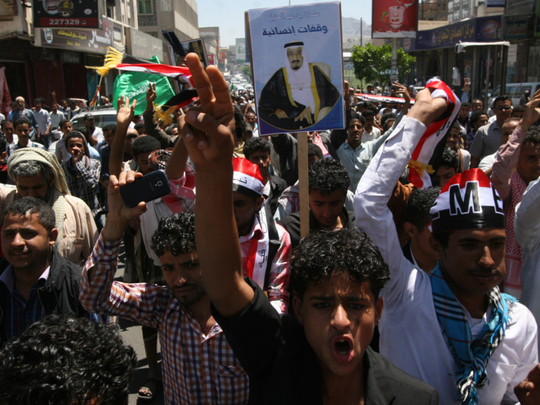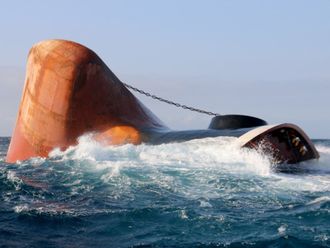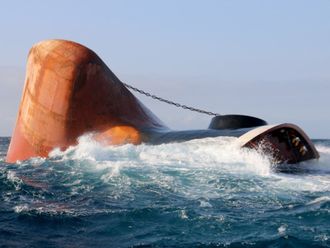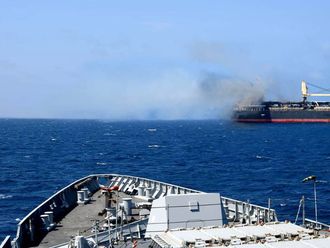
Taiz: Loud music and dancing to the rhythm of drums abound Jamal street in Taiz. It’s almost like a festival atmosphere where tens of thousands have gathered for the fourth day to protest against Al Houthi invasion of Yemen’s third
largest city.
Young men, women and children with their palms painted in the colours of the Yemeni flag [red, white and black], threw their fists in the air against a backdrop of burning rubber tyres and dark smoke billowing in the background.
It was a sign they were determined to get rid of the militias.
“Nothing is going to stop us, we are determined to drive Al Houthi rebels out of Taiz. Until then the protests will continue, even if they want to kill us,” said a determined Akram Al Jubaihi studying media studies at Taiz University.
Unlike Sana’a, Taiz, located 330 km south of the capital has never particularly been warm to Al Houthi militias. The city prides itself on educated people, professionals and traders, and was at the heart of the revolution in 2011, that
toppled former president Ali Abdullah Saleh.
With little tribal influence, the people of Taiz have resisted the militias’ putschist tactics.
Fernando Carvajal, US-based Yemen analyst, who spent several years in the country, said Taiz is one of the most strategic prizes for Al Houthis and Saleh.
Once a military force enters Taiz from Dhamar, it has no topographical obstacles to move south toward Aden.
“It is not only symbolic as the ‘centre of the youth revolution’ of 2011 but it is a province with access to the Red Sea. Besides it also has a large airport to use by the air force, the road leads to five southern provinces and from the mountains of Turbah, direct missiles can reach the city of Aden,” Carvajal said.
A disgusted physician and activist Abdul Kader Al Junaid said, “Al Houthis have been inserted into the Special Forces by Saleh to hurt Taiz and to do his dirty work, but were denied joining Brigade 22, for a reason that will be evident, later. It’s one of Saleh dances.”
Al Houthi rebels used teargas and opened gunfire to disperse the large crowds, but the activists were undeterred. By Thursday, the death toll had reached between nine and twelve, and several hundreds were injured.
Taiz Medical Association called on doctors and health professionals to assist at other hospitals including Ibn Sina, Al Hamd and Al Dawli hospital with the rising injuries and shortage of health professionals on the ground. Al Junaid said the rebels were also targeting medical crews and ambulances.
Hussain Al Bokhaiti, a member of the Al Houthi Political Office denied his group was behind inciting violence. Al Bokhaiti reiterated the protests got violent as a result of the Muslim Brotherhood-affiliated Islah party supporters.
Meanwhile, in the early hours of Thursday morning, the Gulf Co-operation Council and it’s allies, consisting of ten other countries, led by Saudi Arabia launched military offensives on several army camps. These targets included Eight brigade air force, Dailami air base, Sana’a International airport, Presidential Palace and 6th military leadership base.
In Taiz, the march downtown to Jamal street was joyful as anti-Al houthi supporters showed their support for the Saudi-led strikes and an end to the militia rule, waving Saudi flags, banners of president Hadi and the Saudi king.












